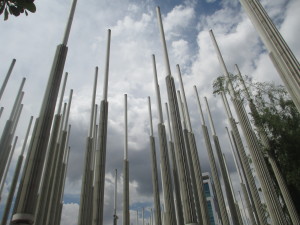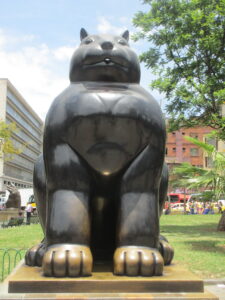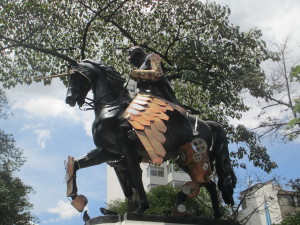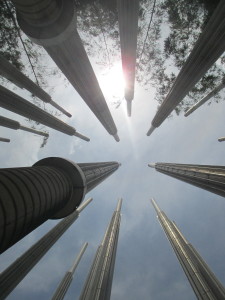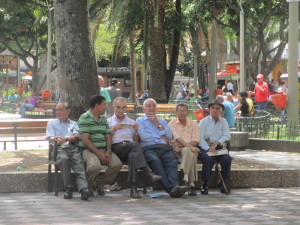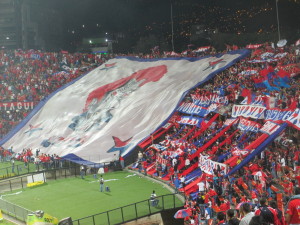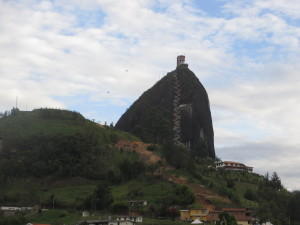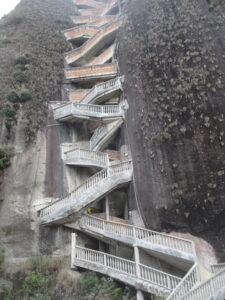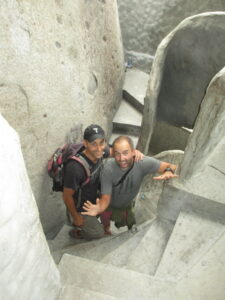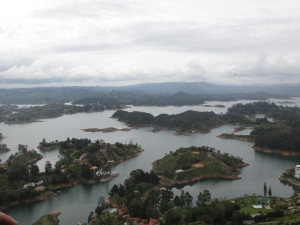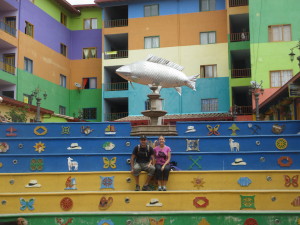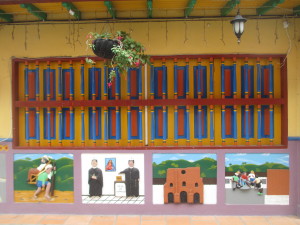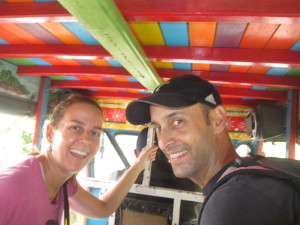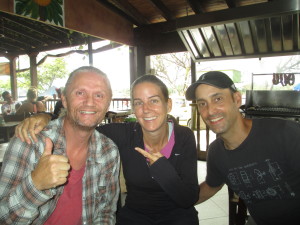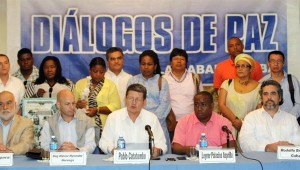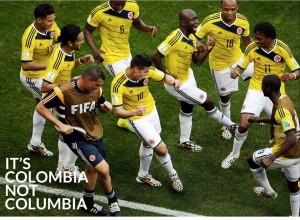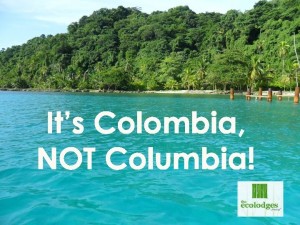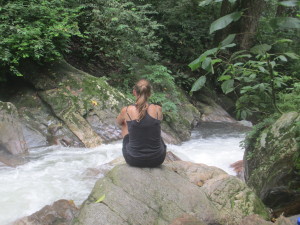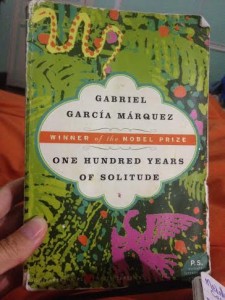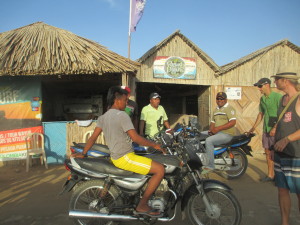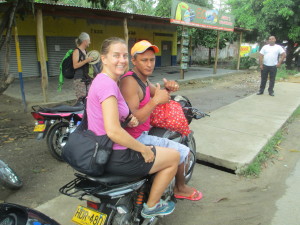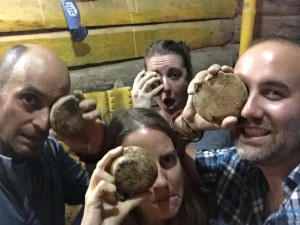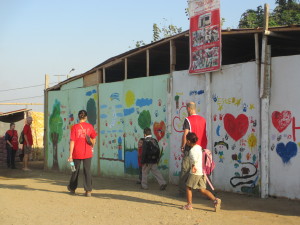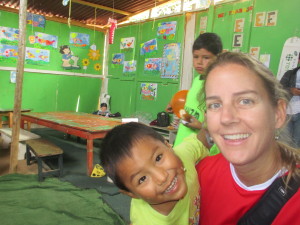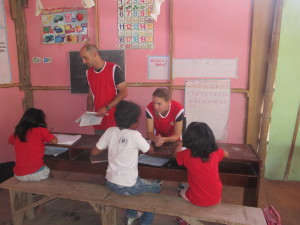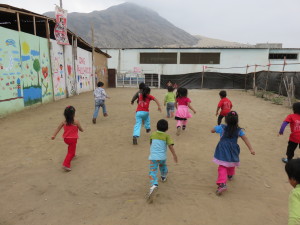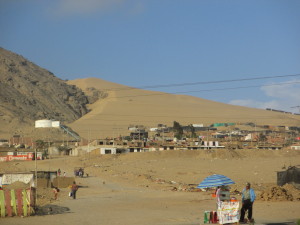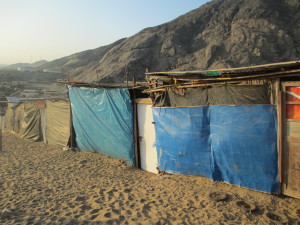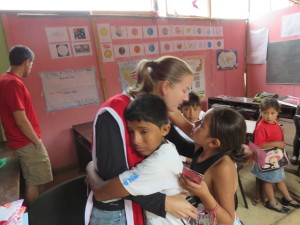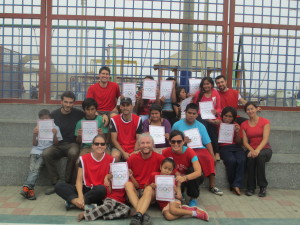We left the coffee region of Salento with Liz and Alex and took a bus seven hours north to Medellin. We spent a few more fun days together and then said goodbye to each other, knowing that we’d be reunited again in a week’s time in northern Colombia.
Medellin: City of Eternal Spring
One of the first things we did in Medellin was to go on a Free Walking Tour. This has become a habit of ours because we’ve found the tours to be quite informative, and this one didn’t disappoint. We spent four hours with our guide who passionately painted a picture of Medellin over the past 30 years.
The first question our guide asked us was, “How many of your parents are nervous because you decided to travel around Medellin and Colombia?” There was a lot of laughter as practically everyone nodded their heads yes.
In reality, great strides have been taken in all of Colombia during the past 10 years to increase safety. Rest assured, Medellin is no longer Pablo Escobar’s Medellin. Ten years ago the violence-weary people of Medellin voted in a new mayor, Sergio Fajardo, whose platform was called “social urbanism”. Action accompanied his words and he immediately began improving security, education and public infrastructure. His efforts supported and built on initiatives that were already underway in the city.
In recent years the homicide rate has plunged. Libraries, parks and schools have been built to improve lower income neighborhoods. A cable car connecting the poor neighborhoods on the hill with the city center is intended as a gateway for opportunity and equality. City parks were created in places where violence once dominated. Colombia’s most famous artist, Fernando Botero, donated 23 of his over-sized sculptures for a renovated plaza in downtown Medellin, Botero’s hometown.
The world took notice.
In 2012, the Institute for Transportation and Development Policy recognized Medellín’s efforts with the “Sustainable Transportation Award.”
In 2013 the Wall Street Journal crowned Medellin “Innovative City of the Year”.
Medellin continues to grow and flourish; it’s a city full of promise. While you still need to be on the lookout for pick-pocketers, for the most part designated areas of the city are safe. We walked around quite a bit and I’ve never seen so many curious stares. Locals love having visitors come to their city, a place that was unsafe for so many years.
Let’s talk about all of the beautiful people living in Medellin. I mentioned in my last post “It’s Colombia, Not Columbia” how cosmetic surgery is popular in this country, and no more so than in Medellin. ‘Paisas’ (people from Medellin) are known around the country to be very vain, and we saw it in both women and men. Both genders are fashion-forward and well-groomed with perfect hair and nails. And yes, the women have noticeable curves in all the right places. For the first time in South America we saw women with blond highlights in their long, dark hair. We found the Paisas beautiful enough to rival the ‘Porteños’ (people from Buenos Aires). But don’t worry — Harry and I fit right in with our daily uniform of quick-dry travel pants, faded tee shirts, baseball cap and pony tail.
Medellin: Futbol!
I was so excited when the owner of our hostel invited us to a soccer game with him! Medellin has two professional teams, known as “Medellin” and “Nationals”. Harry and I went with Andreas to watch Medellin play against a team from northern Colombia. It was such a treat because he drove us to the stadium in his car — no crowded buses to navigate!
You might remember that I also went to a professional game in Buenos Aires. My two experiences were so much fun! They were also very similar for three reasons: 1) The fans were really loud and passionate, singing and chanting the entire game. The energy was high and the crowds were intense. 2) In my opinion, the soccer wasn’t that impressive (shhh, don’t tell anyone I said that) because all of the really talented players end up playing professionally in Europe or in the US. 3) The government didn’t allow fans of the opposing team into the stadium, so the cheering was all one-sided…. which is a very, very odd thing to experience.
It was a tournament game, and Medellin ended up losing in penalty kicks. You could have heard a pin drop since there wasn’t anyone there to cheer for the other team. Medellin fans quietly grabbed their things and walked out the gate. It was eerily quiet.
Regardless of the loss, we still had a blast and going to the game will always be an awesome memory.
El Peñon de Guatapé: A Really Big Rock
Harry, Alex, Liz and I ventured to a cute little town called Guatapé, only two hours by bus outside Medellin. En route we stopped to walk up a Really Big Rock. A National Monument, this monolithic formation is 650 feet tall and somehow supports a staircase built into a crack in its side, looking similar to a zipper.
In the 1970’s the area was dammed for hydro-electric power, creating a beautiful landscape consisting of finger lakes and islands. Unfortunately the water was really low, a reminder of how dry Colombia is right now.
Seven hundred and forty (740!) steps later we reached the top and were granted views of the dramatic scenery below.
Guatapé: Color Capital of Colombia
Guatape is the sweetest little town that you ever did see. Every building is covered in vibrant wall art known as ‘zócalos’, a tradition unique to Guatapé. Each zócalo is distinct and reflects the interests and personality of the owner. Walking up and down the cobblestone streets was a feast for the eyes.
This brightly colored moto-taxi was total awesomeness. The fact that it was really bumpy and incredibly loud made it that much better. I felt like a Colombian Rainbow Princess. Shazam!
Hey look, it’s Adrian! We’ve spent chunks of time with this fun Australian in both Peru and Ecuador so it was only fitting that we’d run into him in Colombia as well. We have a special connection with this guy because we volunteered for two weeks together at the Hilo Rojo School.
We shared some big hugs and laughs and invited him to join the four of us up north for a week of beaches, deserts and four-wheel drives. It was our mission to travel to the northernmost point in South America, and we wanted Adrian to be along on the adventure.
Up Next: Cartagena, the Caribbean and the northern-most point in South America

